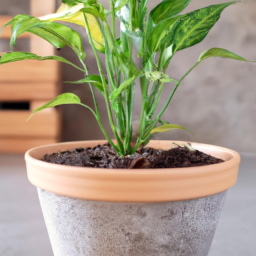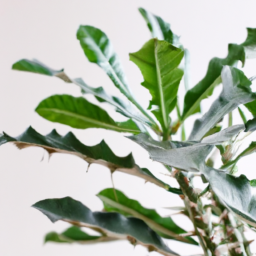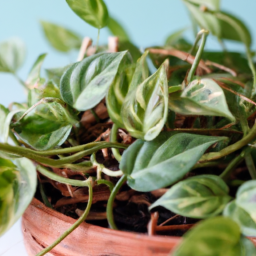
Are you looking to add some greenery to your indoor space? If so, you’re in the right place! In this blog post, we’ll be discussing the best indoor plants to grow. Whether you’re a seasoned plant parent or just starting out, there’s something for everyone on this list. Indoor plants not only add a touch of nature to your home but also have numerous health benefits. So, let’s dive in and discover which plants are the best fit for your indoor space!
Benefits of Growing Indoor Plants
The Benefits of Having Indoor Plants
Indoor plants are not only aesthetically pleasing but also offer a multitude of benefits for your overall well-being. One of the primary benefits of having indoor plants is their ability to purify the air. Plants absorb carbon dioxide and release oxygen through the process of photosynthesis, which can help improve air quality in your home. This can lead to better respiratory health and overall improved air quality.
In addition to purifying the air, indoor plants can also help reduce stress and anxiety. Studies have shown that being around plants can have a calming effect on the mind and body, helping to reduce feelings of stress and promote a sense of well-being. Having indoor plants in your home can create a peaceful and relaxing environment that can help you unwind after a long day.
Furthermore, indoor plants can also improve concentration and productivity. Research has shown that having plants in your workspace can help increase focus and productivity, making you more efficient and effective in completing tasks. The presence of plants can also help boost creativity and problem-solving skills, making them a great addition to any office or study space.
Choosing the Best Indoor Plants for Your Home
When selecting indoor plants for your home, it’s important to consider factors such as light levels, humidity, and maintenance requirements. Some of the best indoor plants to grow include:
– Spider Plant: Known for its air-purifying qualities and easy maintenance, the spider plant is a great choice for beginners.
– Snake Plant: This plant is perfect for low-light conditions and can help improve indoor air quality by removing toxins from the air.
– Peace Lily: With its beautiful white flowers and ability to thrive in low light, the peace lily is a popular choice for indoor plant enthusiasts.
Caring for Your Indoor Plants
Proper care is essential for the health and longevity of your indoor plants. Make sure to water your plants regularly, but be careful not to overwater as this can lead to root rot. Additionally, provide your plants with adequate sunlight or artificial light to ensure they thrive. Regularly dusting the leaves of your plants can also help them absorb more light and stay healthy.
It’s also important to monitor the humidity levels in your home, as some plants require higher humidity levels to thrive. Consider using a humidifier or placing a tray of water near your plants to increase humidity levels. Lastly, be on the lookout for pests and diseases, and take prompt action to prevent them from spreading to other plants.
By following these tips and choosing the right indoor plants for your home, you can create a green oasis that not only enhances the beauty of your space but also provides a host of health benefits. So go ahead and start growing your indoor plant collection today!

Top Indoor Plants for Beginners
Spider Plant
Spider plants are one of the best indoor plants for beginners due to their low maintenance requirements and air-purifying qualities. These plants are known for their long, arching leaves and small white flowers that eventually turn into baby spider plants. Spider plants thrive in indirect sunlight and only need to be watered when the soil is dry to the touch. They are also safe for pets, making them a great choice for pet owners.
If you’re new to indoor gardening, consider starting with a spider plant to add a touch of greenery to your space without the stress of high maintenance care.
Spider plants can be easily propagated by planting the baby spider plants that grow from the mother plant, allowing you to expand your indoor garden with minimal effort.
Pothos
Pothos is another excellent choice for beginners looking to grow indoor plants. These plants have heart-shaped leaves that come in a variety of colors, including green, golden, and variegated. Pothos are incredibly versatile and can thrive in a wide range of lighting conditions, from low light to bright, indirect sunlight.
One of the key benefits of pothos is their ability to purify the air by removing toxins such as formaldehyde and benzene. They are also known for their resilience and can bounce back quickly from neglect, making them perfect for those who may forget to water their plants regularly.
To care for pothos, simply water when the soil is dry and trim back any leggy growth to encourage bushier, healthier plants. With minimal effort, you can enjoy the beauty and air-purifying benefits of pothos in your home.
Snake Plant
Snake plants, also known as mother-in-law’s tongue, are a popular choice for beginners due to their hardiness and unique appearance. These plants have tall, upright leaves that resemble snakes, making them a striking addition to any indoor space. Snake plants are incredibly low maintenance and can thrive in low light conditions, making them perfect for offices or rooms with little natural light.
In addition to their aesthetic appeal, snake plants are also excellent air purifiers, removing toxins such as formaldehyde and benzene from the air. They are drought-tolerant and only need to be watered sparingly, making them ideal for forgetful plant owners.
To care for a snake plant, simply water occasionally and avoid overwatering, as this can lead to root rot. With minimal care, you can enjoy the beauty and air-purifying benefits of snake plants in your home.

Best Indoor Plants to Grow
Tips for Successfully Growing Indoor Plants
Choose the Right Plants
When it comes to growing indoor plants, it’s important to choose the right ones that will thrive in your home environment. Consider factors such as light levels, humidity, and temperature when selecting plants. Some popular indoor plants that are easy to grow include spider plants, pothos, and peace lilies. These plants are known for their ability to adapt to different conditions and require minimal maintenance.
Before purchasing any indoor plants, research their specific care requirements to ensure they are a good fit for your home. Some plants may require more sunlight or water than others, so it’s important to understand what each plant needs to thrive.
Additionally, consider the size of the plant and how much space it will need to grow. Some indoor plants, such as fiddle leaf figs, can grow quite large and may not be suitable for smaller spaces. Choose plants that will fit well in your home and won’t outgrow their environment.
Provide Adequate Light and Water
Light and water are essential for the growth and health of indoor plants. Most indoor plants require bright, indirect light to thrive. Place your plants near a window where they can receive plenty of natural light throughout the day. If your home doesn’t have a lot of natural light, consider using grow lights to supplement the light your plants receive.
When it comes to watering indoor plants, it’s important to strike the right balance. Overwatering can lead to root rot, while underwatering can cause the plant to wilt and die. Check the soil moisture regularly and water your plants when the top inch of soil feels dry to the touch. Use a watering can with a narrow spout to water the soil directly and avoid getting water on the leaves, which can lead to fungal diseases.
It’s also important to use the right type of water when watering indoor plants. Tap water may contain chemicals such as chlorine and fluoride that can be harmful to plants. Consider using filtered water or allowing tap water to sit out overnight before watering your plants to allow the chemicals to dissipate.
Maintain a Consistent Environment
Indoor plants thrive in consistent environments, so it’s important to maintain stable temperature and humidity levels in your home. Most indoor plants prefer temperatures between 65-75 degrees Fahrenheit and humidity levels of around 50-60%. If your home is particularly dry, consider using a humidifier to increase the moisture in the air.
It’s also important to protect your indoor plants from drafts and sudden temperature changes. Avoid placing plants near air vents, windows, or doors where they may be exposed to cold drafts or hot, dry air. Keep your plants away from heaters or air conditioners that can create extreme temperature fluctuations.
Regularly dust the leaves of your indoor plants to remove any buildup of dust that can block sunlight and hinder photosynthesis. You can use a damp cloth or a gentle spray of water to clean the leaves and keep your plants looking healthy and vibrant.
Here’s the Summary Snapshot
Looking to add some greenery to your indoor space? Indoor plants are not only beautiful to look at but also have numerous health benefits. From purifying the air to reducing stress, plants can make a significant difference in your home or office. But with so many options available, it can be overwhelming to choose the right plants for your space.
Some of the best indoor plants to grow include the snake plant, pothos, spider plant, and peace lily. These plants are easy to care for and can thrive in low light conditions, making them perfect for beginners or those with busy schedules. Additionally, they are known for their air-purifying properties, helping to create a healthier environment indoors. So, whether you’re looking to brighten up a dark corner or simply want to bring a touch of nature inside, consider adding these plants to your indoor garden.
Frequently Asked Questions from our readers:
Q1: What are some of the best indoor plants to grow?
A1: Some of the best indoor plants to grow include pothos, spider plants, snake plants, peace lilies, and ZZ plants. These plants are known for their ability to thrive indoors with minimal care.
Q2: What are the benefits of growing indoor plants?
A2: Indoor plants not only add beauty and greenery to your space but also help purify the air by removing toxins and releasing oxygen. They can also improve your mood and reduce stress levels.
Q3: How do I care for indoor plants?
A3: To care for indoor plants, make sure they have proper lighting, water them according to their specific needs, and occasionally fertilize them. It’s also important to regularly dust their leaves and check for pests.
Q4: Can indoor plants help improve indoor air quality?
A4: Yes, indoor plants can help improve indoor air quality by removing harmful toxins such as formaldehyde, benzene, and trichloroethylene. They act as natural air purifiers, making your space healthier to breathe in.
Q5: Are there any low-maintenance indoor plants for beginners?
A5: Yes, there are several low-maintenance indoor plants that are perfect for beginners, such as succulents, cacti, and spider plants. These plants require minimal care and are great for those new to indoor gardening.
Dr. Olivia Green is a botanist with over two decades of experience in indoor plant cultivation. She holds a Ph.D. in Plant Biology and has dedicated her career to researching plant behavior in controlled environments. Dr. Green is passionate about helping plant enthusiasts master the art of indoor gardening through her extensive knowledge and practical insights.


